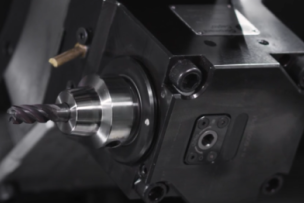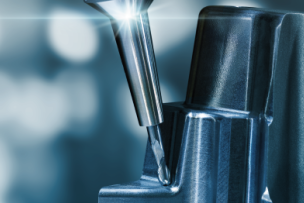Sandvik Coromant is the world’s leading supplier of tools, tooling solutions and know-how to the metalworking industry. With extensive investments in research and development they create unique innovations and set new productivity standards together with their customers. These include the world's major automotive, aerospace and energy industries.
Sometimes advertisements are too good to be true. But the ad for the CoroCut QD for Y-axis parting tool lived up to its promises and has given American Valley Machining 500 to 600% gains on some operations.
Brent Schelske knows a good thing when he sees it. A process improvement engineer at Valley Machining Company, he was surfing the Sandvik Coromant website recently for technical information when he came across an advertisement for a new kind of cutting tool, one that seemingly breaks the rules of traditional turning operations. It’s called the CoroCut QD for Y-axis parting, and whether you’re a machinist or not, you’ll appreciate Schelske’s excitement over the new tool’s potential.
The company has a long history of innovation. Established in 1980 by founders Len Van Otterloo and Chuck Ver Steeg, Valley Machining once specialized in multi-spindle turning. The Rock Valley, Iowa machine shop has grown by leaps and bounds since then, however, and today has 85 employees, 100,104 square feet of manufacturing space and provides precision-machined parts to customers throughout North America and countries around the world.
Although many of its original cam-operated multi-spindle lathes are still in use, Valley Machining has kept pace with machine tool innovation, investing in dozens of CNC machining centers and advanced multi-tasking lathes over the years. Schelske was developing a process plan for one of these—a twin-spindle, live-tool, Y-axis mill-turn machine—when he called his local tooling representative, Dick Kersten of Cline Tool, to ask about Sandvik Coromant’s newest parting tool.
“With a twin-spindle lathe, you’re generally able to work on both sides of the part simultaneously, except during the parting operation,” he says. “Because each spindle is in use at this time, any improvement gain here means a significant improvement opportunity—the video on the Sandvik Coromant website suggested feed rates up to three times faster using its Y-axis parting technology. To be honest, I was a little skeptical, but decided to see for myself.”







Talk to Us!
Leave a reply
Your email address will not be published. Required fields are marked *